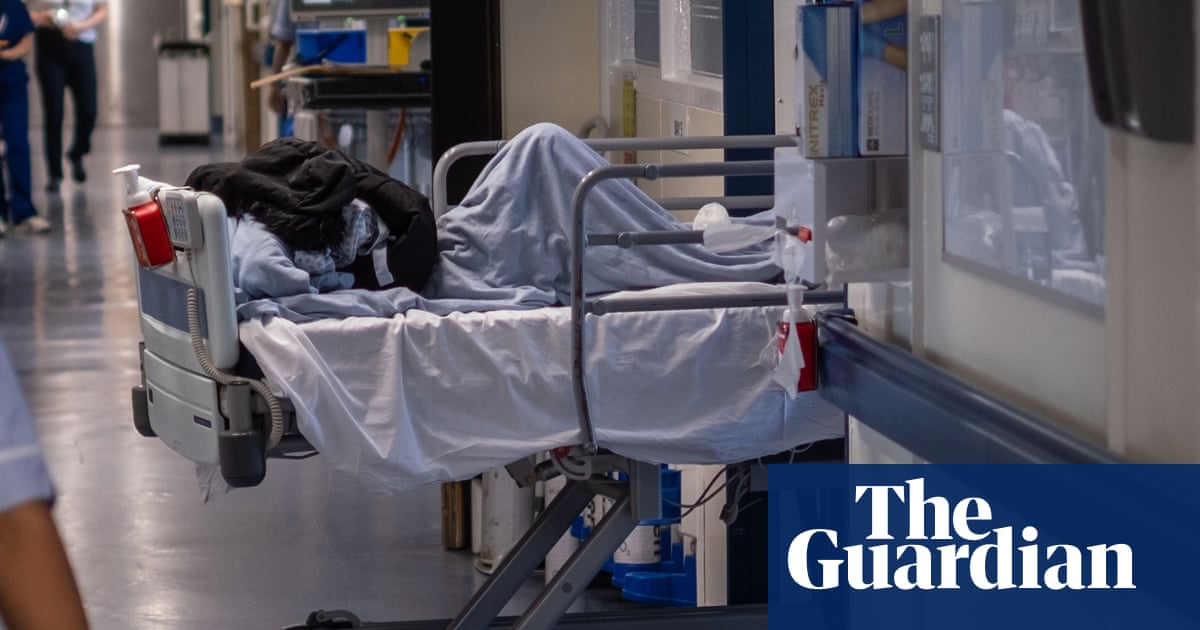About 49,000 A&E visits last year resulted in patients waiting 24 hours or more for a hospital bed, with people aged 65 or over making up almost 70% of cases.
According to a freedom of information request by theLiberal Democrats, some patients went 10 days before getting a space on a ward.
The analysis, which used data from 54 trusts inEngland, showed that of the 48,830 “trolley waits” of 24 hours or longer in 2024, 33,413 were experienced by people aged 65 or over.
The term “trolley wait” refers to the time between a patient being transferred to a ward after a decision has been taken to admit them to hospital.
The Lib Dems said East Kent’sNHStrust had the highest number of day or longer trolley waits last year at 8,916, up from 30 in 2019 – pre-pandemic – followed by Liverpool University hospitals trust with 4,315, up from 10 in 2019. However, the party estimated that the real number of 24-hour cases was likely to be far higher because only 54 out of 141 trusts had provided full data.
TheRoyal College of Nursing(RCN) said the figures “only begin to scratch the surface” of a “crisis in corridor care” – after reports of patients being seen in the corridors of hospitals due to a lack of beds. The RCN said the declining recruitment in nursing was adding to the problem.
“The NHS and the UK government must begin to disclose the true scale of the problem if they’re serious about eradicating it,” general secretary and chief executive of the RCN Prof Nicola Ranger said. “A single patient waiting for more than 24 hours is unacceptable, tens of thousands waiting shows why corridor care must be eradicated. It is undignified and unsafe, and now a year-round crisis.
The Lib Dems want the government to make a new team of “super-heads”, composed of experienced NHS bosses who would go into struggling trusts and bring them up to standard.
“The least patients deserve is the dignity to be treated in an appropriate area,” Lib Dem health and social care spokesperson Helen Morgan said. “Not the ramshackle waiting rooms and corridors that far too many have to suffer through for hours.
“That is why the government must ensure that this is the last winter crisis anyone will experience and end corridor care by the end of this parliament.
“The Conservatives’ beyond-shameful neglect brought us to this point, but theLabourgovernment’s approach of sitting on its hands and hoping it all gets better has not survived contact with reality.”
The current Labour government has made cutting NHS waiting lists one of its key missions.
“We have taken action to protect A&E departments, introducing the new RSV vaccine, delivering more than 27m Covid and flu vaccines and ending the strikes so staff were on the frontline not the picket line for the first winter in three years,” a Department ofHealthand Social Care spokesperson said.
“This work continues to ensure patients are treated quickly. We are fundamentally reforming the NHS as part of our Plan for Change, providing more care in the community, so fewer patients have to go to A&E, and those who do are treated faster and with dignity.”
A spokesperson for East Kent hospitals trust said: “We have seen increased attendances across our three main hospitals and we are sorry that patients are waiting longer than we would like in our emergency departments.”
UniversityHospitalsof Liverpool group has been contacted for comment.
